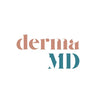Radiofrequency (RF) tightening is a non-invasive dermatological procedure that utilizes radiofrequency energy to heat the skin's deeper layers, promoting collagen production and skin tightening.
This treatment can effectively improve skin laxity, reduce wrinkles, and enhance overall skin tone and texture.
RF tightening is commonly used on the face(under-eye), neck, abdomen, and thighs, offering patients a non-surgical option for achieving smoother, firmer skin.
Indications
RF tightening is indicated for patients seeking improvement in skin laxity, wrinkles, and overall skin tone.
It is suitable for individuals with mild to moderate signs of aging or those looking to enhance their facial or body contours without undergoing surgery.
Patients with realistic expectations and good overall health are ideal candidates for RF tightening.
Procedure
During the RF tightening procedure, a specialized device is used to deliver controlled radiofrequency energy to the targeted treatment area.
The energy heats the deeper layers of the skin, stimulating collagen production and causing the skin to contract and tighten gradually.
The procedure is typically performed in-office and requires no anesthesia, with minimal discomfort and downtime.
Multiple treatment sessions may be recommended to achieve optimal results, spaced several weeks apart.
Precautions
While RF tightening is generally safe, certain precautions should be taken.
Patients with active infections or skin conditions in the treatment area should postpone the procedure until the condition resolves.
Individuals with pacemakers or other electronic implants should consult with their physician before undergoing RF treatment.
Pregnant or breastfeeding women should avoid RF tightening due to potential risks to the fetus or infant.
FAQs for radio frequency tightening
Q1. How does RF tightening work, and what areas of the body can be treated?
RF tightening works by delivering radiofrequency energy deep into the skin, stimulating collagen production and promoting skin tightening. It can be used to treat various areas of the body, including the face, neck, abdomen, arms, thighs, and buttocks.
Q2. What are the potential side effects or risks associated with RF tightening?
Common side effects of RF tightening may include temporary redness, swelling, or mild discomfort at the treatment site, which usually resolves within a few hours to days. Rarely, more serious side effects such as burns or changes in skin pigmentation may occur, but these are uncommon when the procedure is performed by a qualified dermatologist.
Q3. Is there any downtime after the procedure, and when can I expect to see results?
There is minimal to no downtime associated with RF tightening, and patients can usually resume their normal activities immediately after treatment. Results may become noticeable gradually over the following weeks and months as collagen production increases, with optimal results typically seen within 3-6 months after treatment.
Q4. Can RF tightening be combined with other cosmetic procedures for enhanced results?
Yes, RF tightening can be combined with other cosmetic procedures such as injectables, laser treatments, or microneedling for enhanced rejuvenation results. Your dermatologist will customize a treatment plan tailored to your specific needs and goals.
Q4. How long do the results of RF tightening typically last, and are maintenance treatments needed?
The longevity of results from RF tightening varies among individuals but may last up to 1-2 years with proper skincare maintenance. Maintenance treatments may be recommended to sustain the benefits over time, depending on individual factors such as skin aging and lifestyle.
Q5. Are there any specific post-procedure instructions I should follow to optimize results and minimize risks?
Your dermatologist will provide post-procedure instructions tailored to your specific treatment plan. This may include avoiding sun exposure, using gentle skincare products, and attending follow-up appointments as recommended.
Q6. Is RF tightening painful, and how many sessions are needed for noticeable results?
RF tightening is typically well-tolerated, with minimal discomfort during the procedure. The number of sessions needed for noticeable results varies depending on individual factors such as skin condition and treatment area. Generally, a series of treatments spaced 1-2 weeks apart is recommended for optimal results.






